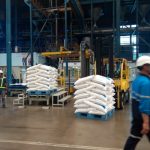Why didn’t I think of that before?
The sugar futures market in NY closed out the week stronger, reaching a 24-point high against last Friday, nailing 20.30 cents per pound for March/2022, now the first negotiating month of the exchange.
The recovery during Friday’s session was due to the news about the gas price increase by Petrobras, driving up fuel price by R$0.1900 per liter at the refinery. The market realized that the Brazilian state-owned oil company should continue with the price policy following the foreign market, despite complaints by demagogic politicians who think that the company should sell gas based on its production cost. As we know, Brazil has many congressmen with serious cognitive problems.
The Brazilian real has devalued by almost 3.5% over the week, reproducing the troubled political scenario and the gloomy perspective of hard days for the economy (inflation, GDP growth, interest rate) in 2022. With this devalued currency (5.5150), the week closed out with average values of the closes of sugar futures contracts converted into real per ton by the rate offered by the financial institutions via NDF (Non-Deliverable Forward) operations, reaching R$2.580 for the 2022/2023 rate and R$2.429 for 2023/2024 – highly profitable prices.
The macro scenario has also improved with the Brent oil rising up to 83.43 dollars per barrel giving further support to ethanol internally after Petrobras price increase. It’s worth noting that despite the price correction, which puts gas at the refinery (before taxes) at R$2.9892 per liter, the fair value being based on Friday’s foreign market points to R$3.4800. That means there is still room for the price to go up 16%.
We have argued here that the oil on the world market has an upward bias for next year, especially when summer arrives in the Northern Hemisphere, the first one after the social restrictions and travel banning and counting on a great part of the population being vaccinated. Tourism will explode when domestic and international trips resume. Then add to that the possible backdrop of volatility of the Brazilian currency due to the 2022 presidential elections. This scenario makes us believe that ethanol might have better profitability at the start of the crop next year (which will start later) than sugar.
More and more executives in the agricultural sector of the mills believe that the next sugarcane crop in the Center-South will not surpass 550 million tons. Such early forecasts are usually the shortest path to a total loss of credibility in those who make them. However, the history and hardships we went through this year because of the drought, fires, frost, and who knows what else, make these forecasts look feasible.
On the other hand, fuel consumption keeps recovering. The numbers released by the ANP (National Oil Agency) show that equivalent gas consumption accumulated over the last twelve months (from September 2020 to August 2021) has increased 3.88%, just about the same yearly rate it used to increase before the Covid-19 pandemic.
Now, our preliminary estimate for ethanol consumption for the 2022/2023 crop is 32.2 billion liters, out of which we have to deduct 3.3 billion liters of corn ethanol, so we will need 29 billion liters for the domestic market plus 2.5 billion liters for export. This ethanol total will demand an amount of sugarcane estimated at 371 million tons. If Brazil (Center-South and Northeast) produces 590 million tons, there will be only 219 million tons left to produce sugar.
Well, taking into consideration the average ATR over the last years, the sugar production in Brazil for next year would be at most 30.7 million tons, a volume not enough to meet the domestic consumption and exports which, based on our preliminary calculation, add up to 35 million tons.
It’s a good thing India exported 7.2 million tons of sugar in the 2020/2021 crop which has just ended in late September. The world won’t run out of sugar for consumption. And we also believe that India won’t limit to the roof of 6 million tons of sugar for export in this 2021/2022 crop which started now in October. It will keep taking advantage of the profitable prices that it has seen over the last months in NY and that encouraged companies to do something they had never done before: fix sugar prices even before producing it.
Conversely, the explosion in natural gas prices will affect the production cost of beet sugar and European sugar competitiveness. That is, there are several positive and negative points linked to the sugar fundamentals which we think neutralize each other, but are far from being bearish.
The combination of all these elements and facts put a psychological level of support on this market. If we saw, right after the pandemic, a sugar futures market in NY melting to unbelievable 9.05 cents per pound, we believe that today’s support should be the average cost of production in Brazil which must be around 13 cents per pound.
But – and there always has to be a “but” – we can never forget that it’s exactly when we are comfortable about things that some unpredictable event comes along and sweeps us away, making us mull over and conclude: “why didn’t I think of that before?”
You all have a great weekend.
To read the previous episodes of World Sugar Market – Weekly Comment, click here
To get in touch with Mr. Arnaldo, write on arnaldo@archerconsulting.com.br












